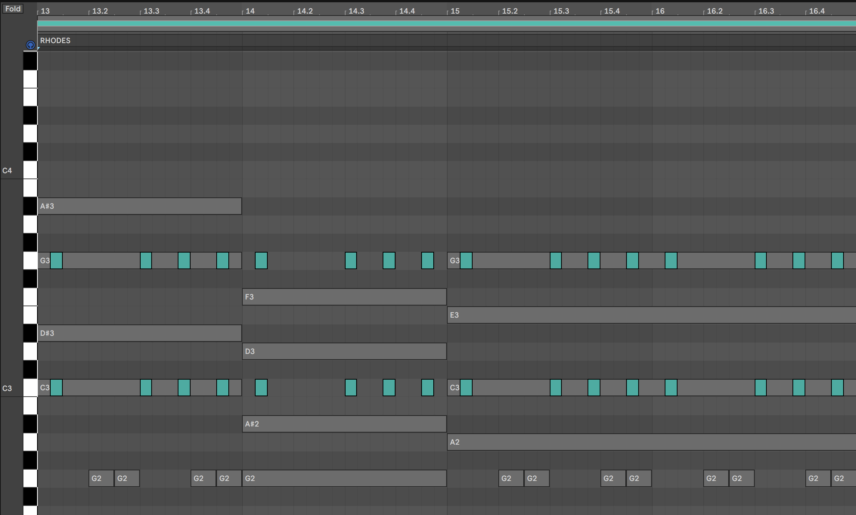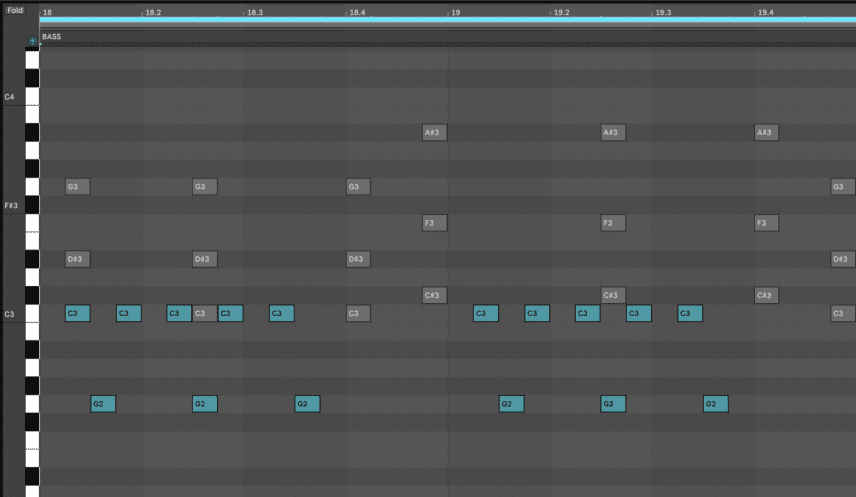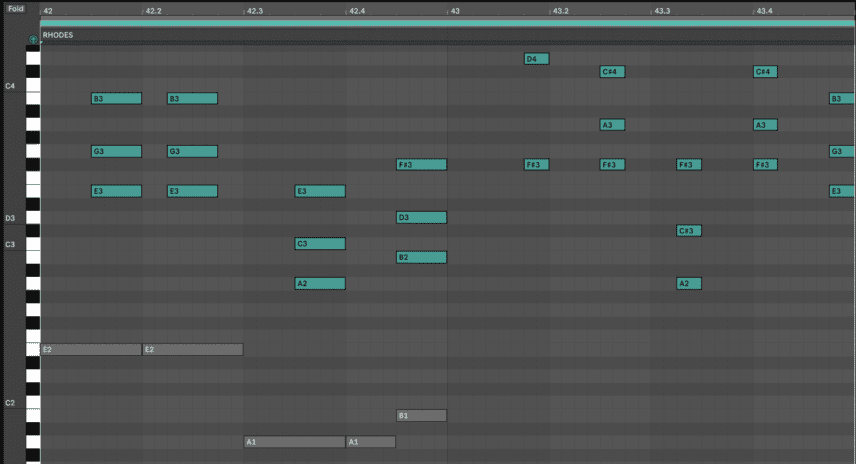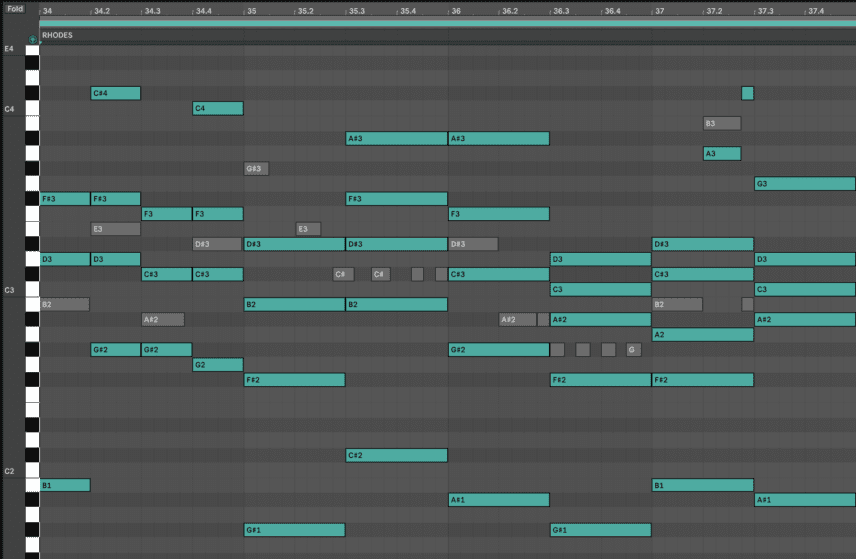In the second part of this two-part Passing Notes series, we break down advanced chord tricks used by one of the true pioneers of house.
Kerri Chandler is one of the true wizards of house music. His output, which includes more than 100 releases, is famed for not only its groove and vibe but also its musicality. Here, we’ll continue breaking down some of his top chord tricks. Part One explored the more common chord techniques of stabs and longer sustained chords. In Part Two, we look at how Kerri Chandler programs chords over looping, pedal-style bass lines and how he implements complex chord progressions made up of many different chords within each bar.

Part One also has a quick theory recap about chords so it would help to refer to it before reading on!
As before, we took a two- or four-bar loop from each track and recreated the bass, keys and pad parts in Ableton. Please download using the form below.
Click on any image to see a larger version.
Pedal Bass Progressions
A lot of the time, the root notes played by the bass clarify what the chord progression is. This is the case in the examples we explored in the first part of this guide. In other situations, the bass does not define the chord progression and instead plays the exact same loop below all of the chords. This type of repeating bass line is called a ‘pedal’. KC’s ‘Mommy What’s a Record’ is a perfect example of a pedal bass.
The chord progression played by the pad is C minor 7 > G minor 7 > A minor 7.
A minor is not in the key of C minor, unlike the first two chords, so it is a borrowed chord.
The bassline of the track is one repeating sub note that does not change despite the fact that there is a three-chord progression playing above. Since it is in a very low register, it is hard to hear the exact note but we likened it to a G. This makes sense because G is in the scale of both C minor and A minor, while it is the root of the second chord, G minor.
A syncopated chord stab playing the notes C and G throughout the progression adds to the tension created by the low sub note. This also makes theoretical sense as C and G are notes found in the scales of all three chords.
Our loop:
Another example of KC’s use of a pedal bass is ‘Checkmate’.
The progression goes C minor > A# minor, with the first chord stab playing a simple triad and the second one playing a first inversion triad.
With this example, we added a 1/8 delay with short feedback to the electric piano, as the delay is a crucial part of the rhythm. The stabs are quite syncopated, emphasizing the offbeats.
With this track, KC also used the trick of switching to the next chord before the one of the next bar. As you can see in the MIDI, the A# minor stab comes in on the last 16th of the first bar while the progression switches back to C minor on the last 16th of the second bar.
The bass riff is a looping combination of C and G notes, which is a unique choice because A# minor does not contain a G note. It would contain a G if it was an A# minor in the Dorian mode, however. In this case, the G would be referred to as a flat 13 (b13).
To summarize, the fact that the bass plays the tension notes G (b13) and C (9) under the second chord adds a feeling of resolving to the first chord. This is because C and G are the more familiar root and fifth notes of C minor. This is a really creative but simple use of a pedal bass. The looping riff creates tension below some chords while sounding more pleasant to the ear under others.
Our loop:
Complex Progressions
In our last category of Kerri Chandler chord progressions, we take a look at two progressions containing four or more chords. The first is from ‘Turn Off The Lights (Who’s Afraid of the Dark)’.
The progression goes (first bar) E minor > A minor > B minor > (second bar) F# minor.
All of the voicings of the first three chords are simple triads, with the second bar containing different voicings of F# minor. This chord creates a contrast because its fifth, C#, is not in the song’s key of E minor. This makes it a borrowed chord, adding some spice to the progression. The variety of F# minor stabs in the second bar again underline KC’s habit of using different voicings of the same chord in succession.
Note that most bass notes are not playing at the same time as the stabs, adding groove with call and response.
Finally, just like with ‘Checkmate’, the stab on the last 16th-note of the loop leads us back to the first chord early.
Our loop:
Now for the holy grail of Kerri Chandler progressions, ‘Rain’.
This eight-bar loop contains some of Kerri’s best chord voicings. It is also one of the prime examples of a complex jazz chord progression used in house music. An issue with the word ‘jazz’ in dance music is that many people simply associate it with voicings that have more tension notes like sevenths, ninths and 11ths. This is not exactly accurate because jazz is also built on long and unique chord progressions, like those in ‘Rain’.
Pro Tip: If you want to learn more about how to add jazz influence to your tracks, music YouTuber Adam Neely has a very informative video in which he breaks down adding different levels of jazz influence to a pop chord progression.
The chord progression in ‘Rain’ goes:
B minor / E7 (13) (add9) / A# minor 7 / D#7 (13) (add9)
G# minor 7 / C#7 (13) (add9)
D# minor 7 over A# / G#7(#11) (add9)
B7 (13) (add 9) // A#7 (13) (add9)
Breaking this progression down in detail could be its own chapter in a book so instead, we are going to focus on its repeating motifs and general structure.
In jazz, a 2-5-1 progression is one of the most common chord progressions. Take for example a D minor > G7 > C major progression in the key of C major. The idea is that the second minor chord goes to the fifth seventh chord and resolves to the root chord.
Rain uses a 2-5 pattern three times in the first six chords! Bm > E7 is 2-5 in the key of A major, A#m > D#7 is 2-5 in the key of G# major and G#m > C#7 is the 2-5 in the key of F#. This is referred to as ‘chain 2-5’s’, which is a very common technique in jazz progressions. Of these three 2-5’s, only one resolves to the one; the second 2-5 (A#m > D#7) resolves to G# minor.
The other jazz-derived motif here is the use of chromatic chords. The final two chords go B7 then one semitone down to A#7 and then one semitone up again to the first chord, B minor. This type of chromatic movement is done using borrowed chords and there are lots of techniques for achieving it.
Pro Tip: Forcing yourself to write chromatic progressions is a great way to discover tricks for borrowing chords from different scales.
Finally, most voicings contain many tension notes, including sevenths, ninths, 13ths and even #11ths. The notes in the voicings also have logical and close transitions to each other, like those in the ‘Harder Gets Higher’ example from Part 1.
Our version:




